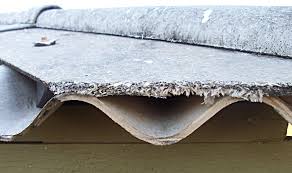
What Is Asbestos?
Asbestos is a group of naturally occurring fibrous minerals composed of thin, microscopic fibres. It was widely used in construction, automotive, and manufacturing industries throughout much of the 20th century. Common applications included insulation, roofing materials, cement products, and pipe lagging. However, when disturbed, asbestos fibres can become airborne and inhaled, leading to severe health issues.
Health Risks Associated with Asbestos
Exposure to asbestos fibres can cause long-term health problems, including:
- Asbestosis: A chronic lung condition caused by inhaling asbestos fibres, leading to scarring of lung tissue and difficulty breathing.
- Mesothelioma: A rare and aggressive cancer that affects the lining of the lungs, abdomen, or heart, almost exclusively linked to asbestos exposure.
- Lung Cancer: Prolonged asbestos exposure significantly increases the risk of lung cancer, especially in smokers.
- Pleural Disorders: These include thickening, plaques, or effusions (fluid buildup) in the pleura, the membrane surrounding the lungs.
The symptoms of asbestos-related diseases often take decades to appear, meaning exposure today may not manifest as illness until 20 to 40 years later.
Identifying Asbestos Risks
Asbestos is most dangerous when it is friable, meaning the material is easily crumbled or reduced to powder, releasing fibres into the air. Common scenarios where asbestos risks may arise include:
- Renovation or demolition projects: Disturbing materials like insulation, ceiling tiles, or pipe wraps can release fibres.
- Aging materials: Deteriorating asbestos-containing materials (ACMs) can break down over time, becoming friable.
- Improper handling: Failing to follow safety requirements when working with or around asbestos can lead to exposure.
Managing Asbestos Safely
Effective asbestos management is key to minimising risks. Here are some critical controls and practices:
1. Asbestos Surveys and Risk Assessments
Before any construction, renovation, or demolition project, conduct an asbestos survey to identify and assess ACMs. This process typically involves:
- Identification: Visual inspections and sampling of materials suspected to contain asbestos.
- Assessment: Determining the condition of ACMs and the likelihood of fibre release.
- Documentation: Maintaining an asbestos register, a detailed record of identified ACMs and their locations. Usually in the form of an Asbestos Management Plan.
2. Implementing Control Measures
Control measures depend on the condition and location of the asbestos. Options include:
- Encapsulation: Applying a sealant to the ACM to prevent fibre release.
- Enclosure: Covering or enclosing the ACM to protect it from damage.
- Removal: Safely removing asbestos, typically as a last resort, by licensed and trained professionals.
3. Workplace Safety Requirements
For workplaces where asbestos is present, employers must establish clear safety requirements, including:
- Training: Providing workers with asbestos awareness and handling training.
- Personal Protective Equipment (PPE): Supplying appropriate PPE, such as respirators and disposable coveralls.
- Air Monitoring: Regularly monitoring air quality to detect asbestos fibre levels.
- Restricted Access: Limiting entry to areas with known asbestos hazards.
4. Hiring Licensed Professionals
Asbestos removal and remediation should always be performed by licensed professionals who have the necessary training, equipment, and permits. Attempting DIY asbestos removal is dangerous and often illegal.
Legal and Regulatory Requirements
Regulations governing asbestos management vary by country, but they typically include:
- Duty to Manage: Building owners or employers are responsible for identifying and managing asbestos risks.
- Notification and Permits: Authorities must be notified before asbestos removal work begins.
- Disposal: Asbestos waste must be disposed of at licensed facilities in sealed, labelled containers.
Failure to comply with asbestos regulations can result in hefty fines and legal consequences, in addition to endangering health.
Protecting Yourself and Others
If you suspect asbestos in your home or workplace, take the following steps:
- Do Not Disturb: Avoid drilling, sanding, or otherwise disturbing materials that may contain asbestos.
- Seek Professional Advice: Contact a licensed asbestos professional for testing and guidance.
- Follow Regulations: Ensure all work involving asbestos complies with local laws and safety standards.
Conclusion
Asbestos may no longer be widely used, but its legacy continues to pose significant health risks. By understanding the dangers, conducting proper risk assessments, and implementing effective controls, you can minimise exposure and protect yourself, your workers, and the public. Remember, when it comes to asbestos, safety is non-negotiable.